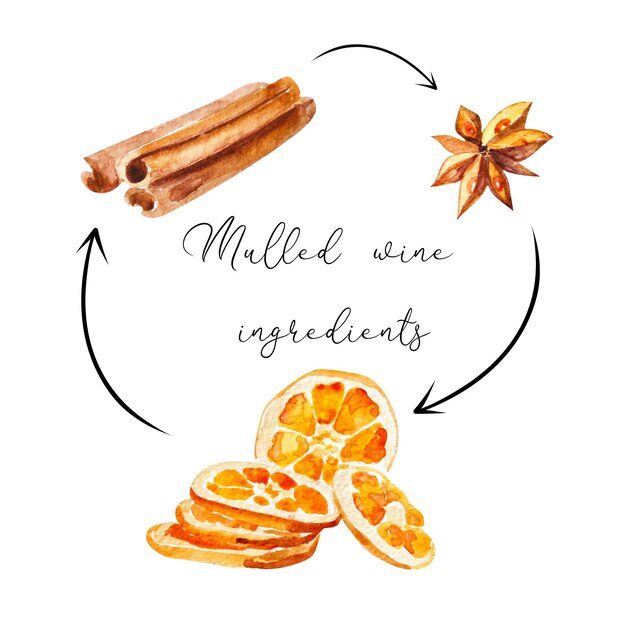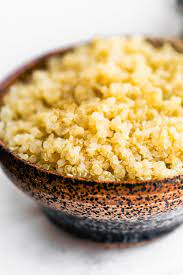The Versatile and Indulgent Delight of Sabayon – A Must-Try Recipe
When it comes to indulgent Italian desserts, one that often takes the spotlight is sabayon. Also known as zabaione, this delectable treat has a rich history and a truly heavenly flavor that keeps dessert lovers coming back for more. If you haven’t yet experienced the delight of sabayon, let us introduce you to this iconic Italian dessert.
Sabayon is a classic Italian dessert that is believed to have originated in the region of Piedmont. It is traditionally made by whisking together egg yolks, sugar, and a sweet wine, such as Marsala, over gentle heat. The result is a creamy and velvety custard-like consistency that is often served warm. However, there are variations of sabayon that use different ingredients, such as coffee or citrus zest, to create unique flavors and textures.
What sets sabayon apart from other Italian desserts is its light and airy texture, which is achieved through a process called “whipping.” The egg yolks are beaten vigorously, either by hand or with an electric mixer, until they become frothy and increase in volume. This step is important as it incorporates air into the mixture, giving sabayon its signature lightness.
Typically, sabayon is served on its own in small glasses or bowls, accompanied by fresh fruit or biscotti for dipping. It can also be used as a luscious topping for cakes, tarts, or even ice cream. Regardless of how you choose to enjoy it, sabayon is sure to tantalize your taste buds and leave you craving more of this Italian dessert masterpiece.
What is Sabayon?
Sabayon, also known as zabaglione, is a classic Italian dessert. It is a creamy custard made from egg yolks, sugar, and sweet wine, such as Marsala. The mixture is whisked over low heat until it thickens and becomes silky smooth.
Sabayon is often served warm or chilled, and it can be enjoyed on its own or used as a sauce or filling for other desserts. It has a rich and velvety texture, with a sweet and slightly tangy flavor from the wine.
There are many variations of sabayon, with different types of wine used, such as champagne or port. Some recipes add vanilla or lemon zest for extra flavor. Sabayon is also commonly paired with fresh fruit, berries, or biscuits for a delicious dessert combination.
Traditionally, sabayon is made by whisking the egg yolks and sugar together in a metal bowl set over a pot of simmering water. The heat from the steam gently cooks the mixture and thickens it. This technique requires constant whisking to prevent the eggs from scrambling.
Sabayon is a versatile dessert that can be enjoyed year-round. It is relatively easy to make, but it does require some patience and attention to detail. The end result is a decadent and elegant dessert that is sure to impress your guests.
The History and Origin of Sabayon
Sabayon, also known as Zabaione, is a famous Italian dessert that has a rich history dating back centuries. The origins of this delectable treat can be traced back to Venice, Italy during the Renaissance period.
It is believed that the dish was created by the Venetians as a way to celebrate the abundance of eggs and wine in the region. In fact, the word “sabayon” is derived from the Italian word “sabayone,” which means a mixture of egg yolks and sweet wine.
The dessert quickly gained popularity among the nobility and aristocracy of Venice, who would indulge in this luxurious treat during their extravagant feasts and banquets. The dish was considered a symbol of wealth and status, as only the privileged few could afford the ingredients.
Over time, the recipe for sabayon spread throughout Italy and became a staple in Italian cuisine. Each region added its own unique twist to the dish, using different types of wine or spirits, such as Marsala wine in Sicily or Champagne in northern Italy.
Today, sabayon is still a beloved dessert in Italy and is enjoyed by people all over the world. It is typically served as a creamy custard-like sauce, often flavored with vanilla or citrus zest, and paired with fresh fruits or served over cakes and pastries.
The rich history and decadent flavors of sabayon make it a true Italian delight that continues to be cherished and enjoyed by dessert lovers everywhere.
Ingredients and Preparation
Sabayon, also known as zabaglione, is a classic Italian dessert that is made with just a few simple ingredients. Traditionally, it is made with egg yolks, sugar, and Marsala wine, but variations of the recipe can also include other flavorings such as vanilla or lemon zest.
To make sabayon, you will need the following ingredients:
Ingredients:
- 4 egg yolks
- 1/2 cup granulated sugar
- 1/2 cup Marsala wine
Preparation:
1. In a heatproof bowl, whisk together the egg yolks and sugar until well combined.
2. Place the bowl over a pan of simmering water, making sure the bottom of the bowl does not touch the water. This creates a double boiler effect and helps to gently cook the sabayon.
3. Gradually whisk in the Marsala wine, a little at a time, until the mixture becomes thick and creamy. This process should take about 10 minutes.
4. Once the sabayon has reached the desired consistency, remove it from the heat and continue whisking for another minute to prevent curdling.
5. Serve the sabayon warm or chilled, either on its own or as a topping for fresh berries, sponge cake, or other desserts.
6. Enjoy!
Flavors and Variations
Sabayon, also known as zabaione, is a classic Italian dessert that is traditionally made with just a few simple ingredients: egg yolks, sugar, and wine. However, there are many ways to customize this delicious dessert to suit your personal taste preferences. Here are some popular flavors and variations of sabayon:
Fruit Flavors
One way to add flavor to your sabayon is to incorporate different types of fruit. You can use fresh or frozen fruit, depending on what is available. Some popular fruit flavors to try include:
| Strawberry Sabayon | Whisk in some strawberry puree or add sliced strawberries to your sabayon for a sweet and refreshing twist. |
| Raspberry Sabayon | Add a burst of tartness by blending in some raspberry puree or topping your sabayon with fresh raspberries. |
| Mixed Berry Sabayon | Combine different types of berries, such as blueberries, blackberries, and raspberries, to create a colorful and flavorful sabayon. |
Liqueur Flavors
If you enjoy the taste of alcohol in your desserts, you can enhance the flavor of your sabayon by adding a splash of your favorite liqueur. Some popular liqueur flavors to consider include:
| Marsala Sabayon | Marsala wine is the traditional choice for sabayon, adding a rich and slightly sweet flavor to the dessert. |
| Amaretto Sabayon | Add some amaretto liqueur to your sabayon for a hint of almond flavor and a touch of sweetness. |
| Grand Marnier Sabayon | Add a splash of orange-flavored liqueur to your sabayon for a bright and citrusy twist. |
These are just a few examples of the many flavors and variations of sabayon that you can try. Don’t be afraid to get creative and experiment with different combinations to create your own unique twist on this classic Italian dessert!
Sabayon with Fruit Sauces and Compotes
Sabayon, a delicious Italian dessert, can be enhanced with a variety of fruit sauces and compotes. These fruity accompaniments add a burst of flavor and freshness to the creamy and rich sabayon.
One popular fruit sauce that pairs well with sabayon is raspberry sauce. Made from fresh raspberries, sugar, and a splash of lemon juice, this sauce provides a tangy and slightly sweet contrast to the sweet and smooth sabayon. Simply blend the raspberries, sugar, and lemon juice together until smooth, then strain to remove any seeds. Spoon the raspberry sauce over the sabayon just before serving.
Peach compote is another great choice to serve alongside sabayon. To make the compote, peel and pit ripe peaches, then slice them into small wedges. In a saucepan, combine the peaches with sugar, lemon zest, and a pinch of cinnamon. Cook over low heat until the peaches become soft and syrupy. Allow the compote to cool before spooning it over the sabayon.
If you’re looking for a tropical twist, try serving sabayon with a mango and passion fruit sauce. Peel and dice a ripe mango, then add it to a blender along with the pulp of a passion fruit and a squeeze of lime juice. Blend until smooth, then strain the mixture to remove any fibrous bits. The resulting sauce will be vibrant and refreshing, perfect for drizzling over the sabayon.
In addition to these fruit sauces and compotes, you can also experiment with other flavors such as blueberry sauce, pineapple compote, or even a spicy chili-infused chocolate sauce. The possibilities are endless, and each combination will bring a unique twist to the classic sabayon dessert!
| Fruit Sauce/Compote | Ingredients | Instructions |
|---|---|---|
| Raspberry Sauce | Fresh raspberries, sugar, lemon juice | Blend raspberries, sugar, and lemon juice until smooth. Strain to remove seeds. Serve over sabayon. |
| Peach Compote | Ripe peaches, sugar, lemon zest, cinnamon | Peel, pit, and slice peaches. Combine with sugar, lemon zest, and cinnamon in a saucepan. Cook until soft and syrupy. Allow to cool before serving over sabayon. |
| Mango and Passion Fruit Sauce | Ripe mango, passion fruit, lime juice | Peel and dice mango. Blend with passion fruit pulp and lime juice until smooth. Strain mixture. Drizzle over sabayon. |
Sabayon with Chocolate and Coffee
Sabayon with chocolate and coffee is a delicious twist on the classic Italian dessert. This variation adds a rich and indulgent flavor to the light and airy custard.
To make Sabayon with chocolate and coffee, you will need:
| Ingredients: | Instructions: |
|---|---|
| 4 egg yolks | 1. In a heatproof bowl, whisk together the egg yolks, sugar, and a pinch of salt. |
| 1/4 cup sugar | 2. Place the bowl over a pot of simmering water, making sure the bottom of the bowl does not touch the water. |
| Pinch of salt | 3. Continue to whisk the mixture vigorously until it becomes thick and creamy, about 5 minutes. |
| 1/2 cup chocolate, melted | 4. Remove the bowl from the heat and gradually whisk in the melted chocolate until well combined. |
| 1/2 cup strong brewed coffee | 5. Stir in the strong brewed coffee until fully incorporated. |
| 1 cup whipped cream | 6. Gently fold in the whipped cream until just combined. |
| Grated chocolate or cocoa powder (for garnish) | 7. Divide the Sabayon mixture into serving glasses and refrigerate for at least 1 hour to set. |
| 8. Before serving, garnish with grated chocolate or a sprinkle of cocoa powder. |
This Sabayon with chocolate and coffee is a decadent dessert that is perfect for special occasions or when you want to treat yourself. The combination of the creamy custard, rich chocolate, and bold coffee flavor creates a deliciously indulgent treat that is sure to satisfy your sweet tooth.
Serving and Pairings
Sabayon is a versatile dessert that can be served in various ways. Here are some popular ways to serve sabayon:
- As a standalone dessert: Sabayon can be enjoyed on its own as a delicious and creamy dessert. It can be served in individual cups or glasses for an elegant presentation.
- Over fresh fruit: Sabayon pairs beautifully with fresh fruits like berries, peaches, and citrus. The creamy texture of the sabayon complements the sweetness and juiciness of the fruits.
- With biscuits or cookies: Serve sabayon with crunchy biscuits or cookies for a delightful combination of textures. The soft and creamy sabayon contrasts perfectly with the crispy and crumbly biscuits.
- With cake or sponge fingers: Sabayon can be used as a sauce or filling for cakes or sponge fingers. It adds a rich and decadent flavor to any cake recipe.
When it comes to pairings, sabayon goes well with a variety of drinks and desserts. Here are some ideas:
- Wine: Serve sabayon with a sweet wine like Moscato d’Asti or a sparkling wine like Champagne. The wine’s sweetness complements the sweetness of the sabayon.
- Coffee: Pair sabayon with a cup of strong and aromatic coffee for a contrasting flavor combination. The bitterness of the coffee cuts through the sweetness of the sabayon.
- Chocolate desserts: Sabayon can be served alongside chocolate desserts like chocolate mousse or flourless chocolate cake. The combination of the creamy sabayon and the rich chocolate is simply irresistible.
- Vanilla ice cream: Top a scoop of vanilla ice cream with a dollop of sabayon for a luxurious dessert experience. The creamy sabayon adds an extra layer of flavor and elegance to the ice cream.
These are just a few suggestions, but feel free to get creative and experiment with different serving and pairing options. The beauty of sabayon is that it is a versatile dessert that can be enjoyed in many ways!
Best Ways to Serve Sabayon
Sabayon is a versatile Italian dessert that can be enjoyed in many different ways. Here are some of the best ways to serve sabayon:
1. Classic: The most traditional way to serve sabayon is on its own, in small serving glasses or bowls. The creamy and light texture of the dessert is perfect to be enjoyed as is.
2. With Fresh Fruit: Sabayon pairs wonderfully with fresh fruits like berries, peaches, and cherries. Simply spoon the sabayon over the fruit or serve it on the side as a dip.
3. With Chocolate: For those who love chocolate, sabayon can be served with shaved chocolate or chocolate sauce drizzled on top. The combination of the rich chocolate and the silky sabayon is heavenly.
4. Layered Dessert: Create a delicious layered dessert by alternating sabayon with ladyfingers or sponge cake and fresh fruit. Top it off with a sprinkle of cocoa powder or grated chocolate.
5. As a Filling: Sabayon can also be used as a filling for other desserts. Fill tart shells, crepes, or even cake layers with sabayon to add a burst of flavor and creaminess.
6. Served Warm: While sabayon is traditionally served chilled, it can also be enjoyed warm. To serve it warm, simply skip the chilling step and serve it immediately after preparing.
7. With Biscotti: Serve sabayon alongside some crunchy biscotti for a delightful contrast of textures. Dip the biscotti into the sabayon for a perfect bite.
These are just a few of the many ways you can serve sabayon. Get creative and experiment with different flavors and combinations to find your favorite way to enjoy this delicious Italian dessert.
Q&A: Sabayon
What is sabayon, and how would you describe its consistency?
Sabayon is a light and rich Italian dessert sauce, typically served as a sweet sauce. It is known for being rich and creamy.
Can you provide a simple sabayon recipe that can be made at home?
To make sabayon at home, whisk vigorously until the mixture becomes frothy. Add your choice of sweet white wine or champagne and continue whisking until the mixture is thick and holds its shape.
What are some key tips for making a delicious sabayon?
Some key tips for making a delicious sabayon include using a wine that you like, not overcooking during the cooking process, and folding in whipped cream to enhance the richness.
Is there anything fancy or complicated about making sabayon?
Nothing hard or fancy is involved in making sabayon. It’s easier than you think and requires only a few ingredients.
How is sabayon typically served, and with what accompaniments?
Sabayon is typically served as a dessert sauce and can be served with fresh berries, over ice cream, or paired with almond cake.
What wines can be used to make sabayon, and is there a preferred type?
Sabayon can be made with Marsala, dry white wine, or sweet white wine like Muscat. You can use any sweet wine that you prefer.
Can you describe the cooking process for making sabayon in detail?
To make sabayon, whisk vigorously until the mixture becomes frothy. Add your chosen wine gradually, whisking continuously, and stop when the mixture is thick and holds its shape.
Are there alternatives for those who want to make sabayon without dairy?
Yes, sabayon can be made without dairy. Simply fold in whipped cream alternatives or use dairy-free substitutes.
How do you ensure the sabayon doesn’t overcook during the cooking process?
Fill a medium saucepan with water and set a bowl over it to create a double boiler. Whisk the sabayon mixture over low heat until it thickens, ensuring the water temperature doesn’t reach a boiling point.
What is the role of an ice bath in the sabayon-making process?
To stop the cooking process and cool the sabayon quickly, set the bowl over an ice bath. This helps maintain the desired consistency and prevents overcooking.








